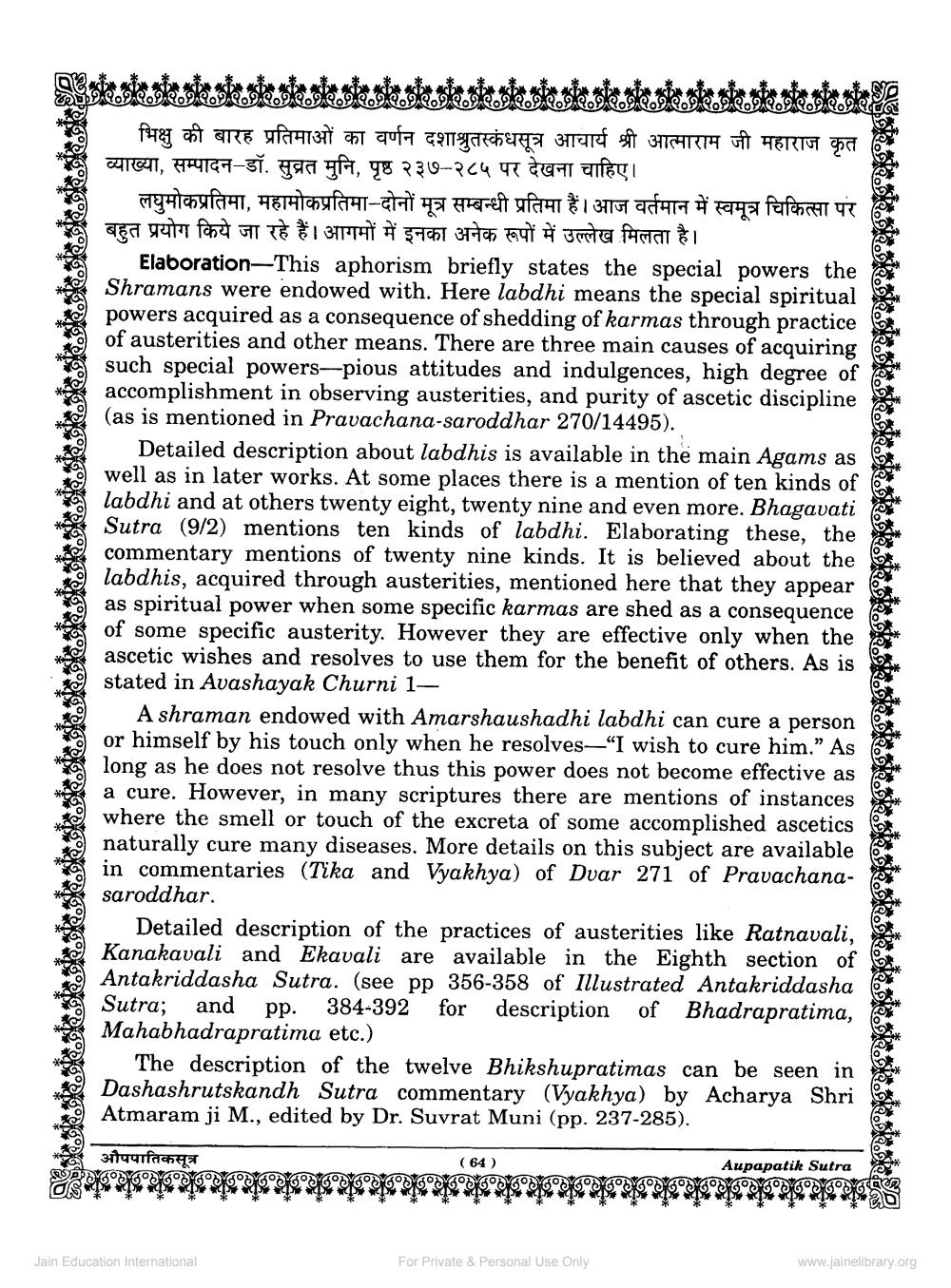________________
भिक्षु की बारह प्रतिमाओं का वर्णन दशाश्रुतस्कंधसूत्र आचार्य श्री आत्माराम जी महाराज कृत व्याख्या, सम्पादन- डॉ. सुव्रत मुनि, पृष्ठ २३७-२८५ पर देखना चाहिए ।
लघुमोकप्रतिमा, महामोकप्रतिमा- दोनों मूत्र सम्बन्धी प्रतिमा हैं। आज वर्तमान में स्वमूत्र चिकित्सा पर बहुत प्रयोग किये जा रहे हैं। आगमों में इनका अनेक रूपों में उल्लेख मिलता है।
Elaboration-This aphorism briefly states the special powers the Shramans were endowed with. Here labdhi means the special spiritual powers acquired as a consequence of shedding of karmas through practice of austerities and other means. There are three main causes of acquiring such special powers-pious attitudes and indulgences, high degree of accomplishment in observing austerities, and purity of ascetic discipline (as is mentioned in Pravachana-saroddhar 270/14495).
Detailed description about labdhis is available in the main Agams as well as in later works. At some places there is a mention of ten kinds of labdhi and at others twenty eight, twenty nine and even more. Bhagavati Sutra (9/2) mentions ten kinds of labdhi. Elaborating these, the commentary mentions of twenty nine kinds. It is believed about the labdhis, acquired through austerities, mentioned here that they appear as spiritual power when some specific karmas are shed as a consequence of some specific austerity. However they are effective only when the ascetic wishes and resolves to use them for the benefit of others. As is stated in Avashayak Churni 1
A shraman endowed with Amarshaushadhi labdhi can cure a person or himself by his touch only when he resolves-"I wish to cure him." As long as he does not resolve thus this power does not become effective as a cure. However, in many scriptures there are mentions of instances where the smell or touch of the excreta of some accomplished ascetics naturally cure many diseases. More details on this subject are available in commentaries (Tika and Vyakhya) of Dvar 271 of Pravachanasaroddhar.
Detailed description of the practices of austerities like Ratnavali, Kanakavali and Ekavali are available in the Eighth section of Antakriddasha Sutra. (see pp 356-358 of Illustrated Antakriddasha Sutra; and pp. 384-392 for description of Bhadrapratima, Mahabhadrapratima etc.)
The description of the twelve Bhikshupratimas can be seen in Dashashrutskandh Sutra commentary (Vyakhya) by Acharya Shri Atmaram ji M., edited by Dr. Suvrat Muni (pp. 237-285).
औपपातिकसूत्र
Jain Education International
( 64 )
For Private & Personal Use Only
Aupapatik Sutra
www.jainelibrary.org




